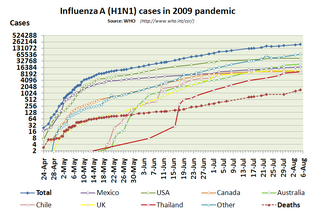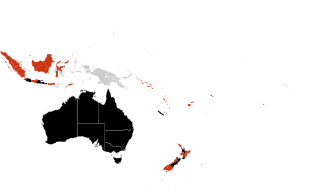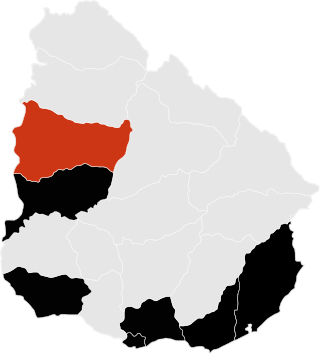
In virology, influenza A virus subtype H1N1 (A/H1N1) is a subtype of influenza A virus. Major outbreaks of H1N1 strains in humans include the 1918 Spanish flu pandemic, the 1977 Russian flu pandemic and the 2009 swine flu pandemic. It is an orthomyxovirus that contains the glycoproteins hemagglutinin (H) and neuraminidase (N), antigens whose subtypes are used to classify the strains of the virus as H1N1, H1N2 etc. Hemagglutinin causes red blood cells to clump together and binds the virus to the infected cell. Neuraminidase is a type of glycoside hydrolase enzyme which helps to move the virus particles through the infected cell and assist in budding from the host cells.

The 2009 swine flu pandemic, caused by the H1N1/swine flu/influenza virus and declared by the World Health Organization (WHO) from June 2009 to August 2010, was the third recent flu pandemic involving the H1N1 virus. The first identified human case was in La Gloria, Mexico, a rural town in Veracruz. The virus appeared to be a new strain of H1N1 that resulted from a previous triple reassortment of bird, swine, and human flu viruses which further combined with a Eurasian pig flu virus, leading to the term "swine flu".
The 2009 flu pandemic in the United States was caused by a novel strain of the Influenza A/H1N1 virus, commonly referred to as "swine flu", that was first detected on 15 April 2009. While the 2009 H1N1 virus strain was commonly referred to as "swine flu", there is no evidence that it is endemic to pigs or of transmission from pigs to people; instead, the virus spreads from person to person. On April 25, the World Health Organization declared a public health emergency, followed concurringly by the Obama administration on April 26.

The 2009 swine flu pandemic in Canada was part of an epidemic in 2009 of a new strain of influenza A virus subtype H1N1 causing what has been commonly called swine flu. In Canada, roughly 10% of the populace has been infected with the virus, with 428 confirmed deaths ; non-fatal individual cases are for the most part no longer being recorded. About 40% of Canadians have been immunized against H1N1 since a national vaccination campaign began in October 2009, with Canada among the countries in the world leading in the percentage of the population that has been vaccinated. The widespread effect of H1N1 in Canada raised concerns during the months leading to the XXI Olympic Winter Games, which took place in Vancouver in February 2010.

This article covers the chronology of the 2009 novel influenza A (H1N1) pandemic. Flag icons denote the first announcements of confirmed cases by the respective nation-states, their first deaths, and relevant sessions and announcements of the World Health Organization (WHO), the European Union , and the U.S. Centers for Disease Control (CDC).
In March and April 2009, an outbreak of a new strain of influenza commonly referred to as "swine flu" infected many people in Mexico and other parts of the world, causing illness ranging from mild to severe. Initial reports suggested that the outbreak had started in February due to farming practices at a pig farm half-owned by Smithfield Foods. Smithfield Foods stated that it had found no clinical signs or symptoms of the presence of swine influenza in the company's swine herd, or among its employees at its joint ventures in Mexico, that it routinely administers influenza virus vaccination to their swine herds and that it conducts monthly testing for the presence of swine influenza. The new strain was identified as a combination of several different strains of Influenzavirus A, subtype H1N1, including separate strains of this subtype circulating in humans and in pigs. The World Health Organization (WHO) and the U.S. Centers for Disease Control and Prevention (CDC) expressed serious concerns that the new strain, which transmits between humans and has had a relatively high mortality rate in the possible and confirmed Mexican cases, has the potential to become an influenza pandemic. It was reported that, because the virus was already widespread, containment would be impossible. The WHO declared a public health emergency of international concern in response to the outbreak on April 25, 2009.

In March and April 2009, an outbreak of a new strain of influenza commonly referred to as swine flu infected many people in Mexico and parts of the United States causing severe illness in the former. The new strain was identified as a combination of several different strains of Influenzavirus A, subtype H1N1, including separate strains of this subtype circulating in humans and in pigs. Spain was the first country in continental Europe to report cases of swine flu, in late April 2009.

This article deals with the status and efforts regarding the 2009 swine flu pandemic by country and continent/region.

In March and April 2009, an outbreak of a new strain of flu, popularly known as swine flu, was discovered to have infected several people in Mexico and the states of California and Texas in the United States. On April 28 Costa Rica became the first Central American country to report the outbreak of the virus, with a confirmed infection. As of November 4 the Costa Rican Ministry of Health had 1,596 confirmed cases, 1,275 pending cases, 8,000 already discarded, and 38 deaths.

The 2009 swine flu pandemic in Brazil began on April 25, 2009, with two people, spreading to 34 over the first two weeks. CDC calculate that Africa and Southeast Asia, which have 38% of the world's population, accounted for a disproportionate 51% of the deaths.
The 2009 flu pandemic in South America was part of a global epidemic in 2009 of a new strain of influenza A virus subtype H1N1, causing what has been commonly called swine flu. As of 9 June 2009, the virus had affected at least 2,000 people in South America, with at least 4 confirmed deaths. On 3 May 2009, the first case of the flu in South America was confirmed in a Colombian man who recently travelled from Mexico – since then, it has spread throughout the continent. By far, the most affected country has been Chile, with more than 12,000 confirmed cases, 104 deaths, and the highest per capita incidence in the world.

The 2009 flu pandemic in Asia, part of an epidemic in 2009 of a new strain of influenza A virus subtype H1N1 causing what has been commonly called swine flu, afflicted at least 394,133 people in Asia with 2,137 confirmed deaths: there were 1,035 deaths confirmed in India, 737 deaths in China, 415 deaths in Turkey, 192 deaths in Thailand, and 170 deaths in South Korea. Among the Asian countries, South Korea had the most confirmed cases, followed by China, Hong Kong, and Thailand.

The 2009 swine flu pandemic in North America, part of a pandemic in 2009 of a new strain of influenza A virus subtype H1N1 causing what has been commonly called swine flu, began in the United States or Mexico.

The 2009 flu pandemic in Oceania, part of an epidemic in 2009 of a new strain of influenza A virus subtype H1N1 causing what has been commonly called swine flu, has afflicted at over 22,000 people in Oceania, with 56 confirmed deaths. Almost all of the cases in Oceania have been in Australia, where the majority of cases have resulted from internal community spread of the virus. In addition, the government of New Zealand, where most of the remainder of cases in Oceania have occurred, is on high alert for any people travelling into the country with flu-like symptoms.

The 2009 flu pandemic in Europe was part of a pandemic involving a new strain of influenza, subtype H1N1. H1N1 is commonly called swine flu. The pandemic infected at least 125,550 people in Europe. There were 458 confirmed deaths in Turkey, 438 confirmed deaths in Russia, and 457 confirmed deaths in the United Kingdom.

The Influenza A (H1N1), also known by the name of swine flu, arrived to Uruguay on May 27, 2009.

The 2009 flu outbreak in Malaysia was part of a larger flu pandemic involving a new type of influenza A virus subtype H1N1 virus. As of 11 August 2009, the country had over 2,253 cases, beginning with imported cases from affected countries, including the United States and Australia from 15 May 2009 onwards, and the first identified local transmission on 17 June 2009. From 12 August 2009, the Malaysian Health Ministry said that it had discontinued officially updating the total number of H1N1 cases within Malaysia in line with guidelines issued by the World Health Organization. As of 21 August 2009 the unofficial number of cases reported in the media is 5,876 so far. The first death related to the A(H1N1) virus was reported on 23 July 2009 and so far there have been 78 deaths reported. On 6 July 2009 Malaysia announced that it was shifting from containment to mitigation to tackle the spread of the virus. The federal government had declared a national health emergency in Malaysia because of the A(H1N1) outbreak and was considering imposing a health curfew similar to the week-long shutdown of non-essential services and industries in Mexico.
The United States experienced the beginnings of a pandemic of a novel strain of the influenza A/H1N1 virus, commonly referred to as "swine flu", in the spring of 2009. The earliest reported cases in the US began appearing in late March 2009 in California, then spreading to infect people in Texas, New York, and other states by mid-April. Early cases were associated with recent travel to Mexico; many were students who had traveled to Mexico for Spring Break. This spread continued across the country's population and by the end of May there were approximately 0 confirmed cases throughout all 50 states.

The 2009 swine flu pandemic in New Zealand was caused by a novel strain of the A/H1N1 influenza virus. A total of 3,175 cases and 69 deaths were recorded, although a seroprevalence study estimated that around 800,000 individuals may have been infected during the initial wave of the pandemic.

The 2009 flu pandemic, an influenza outbreak commonly known as "swine flu", affected Portugal from May 2009 to early 2010. The outbreak caused 122 deaths in the country.


















